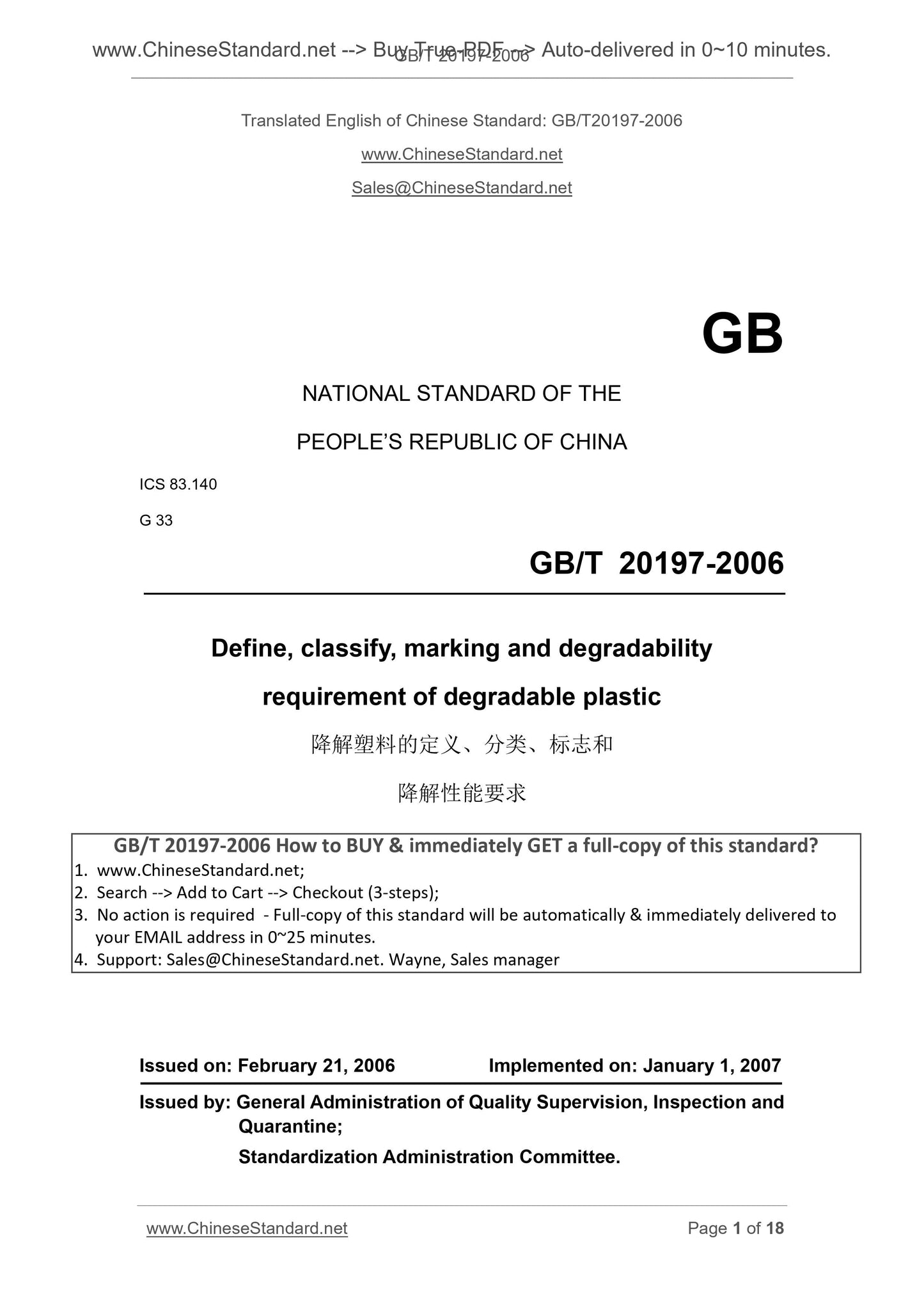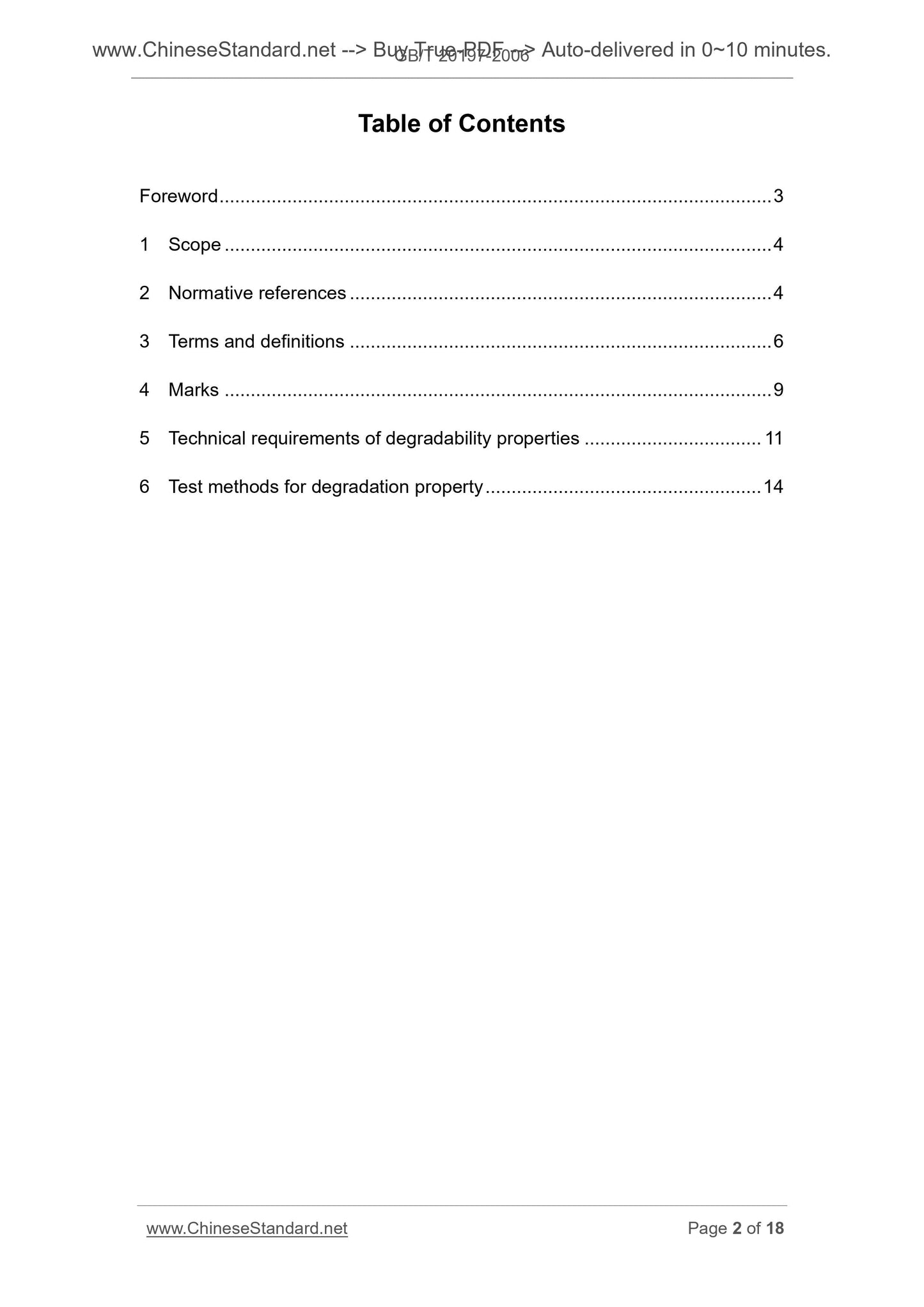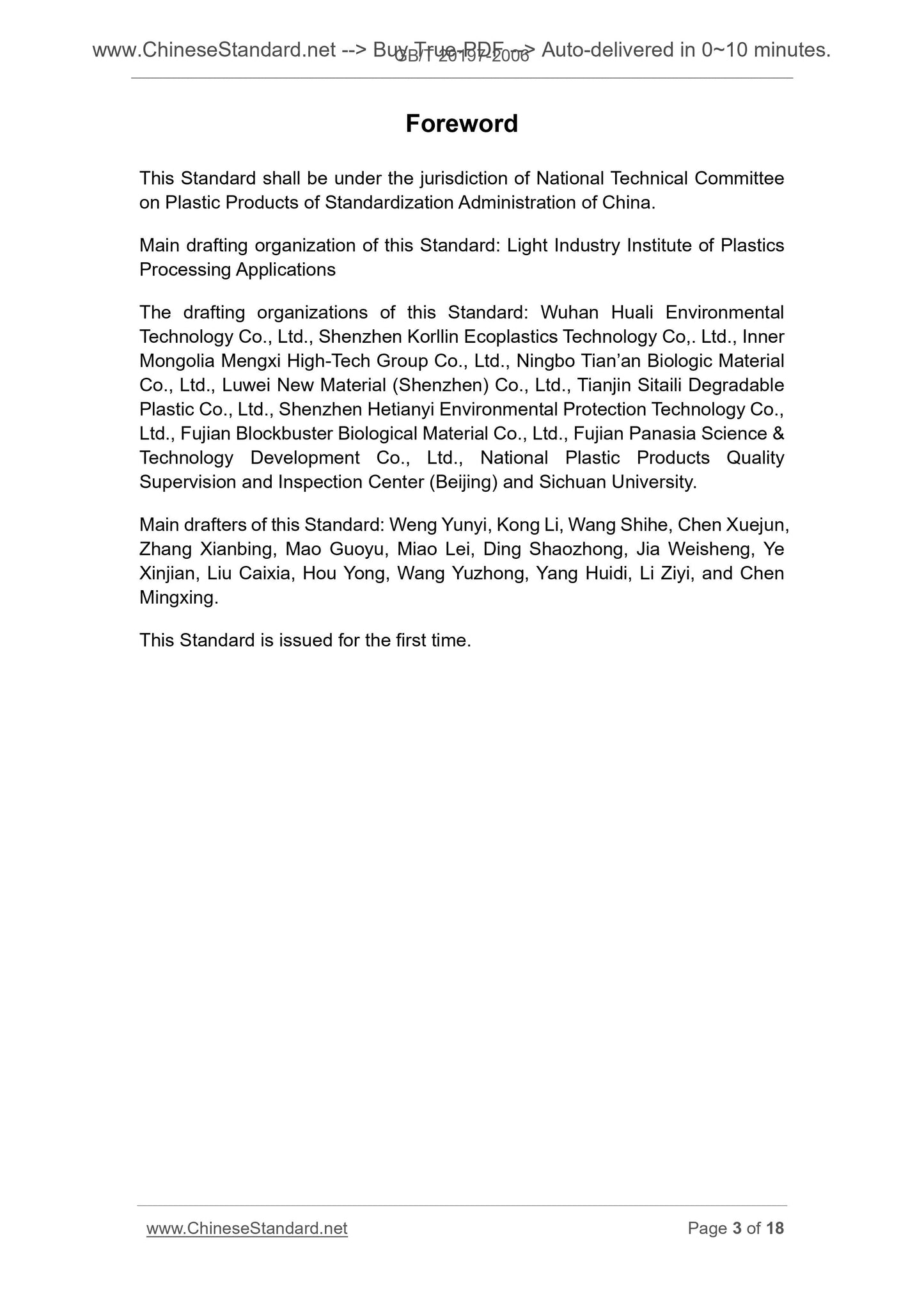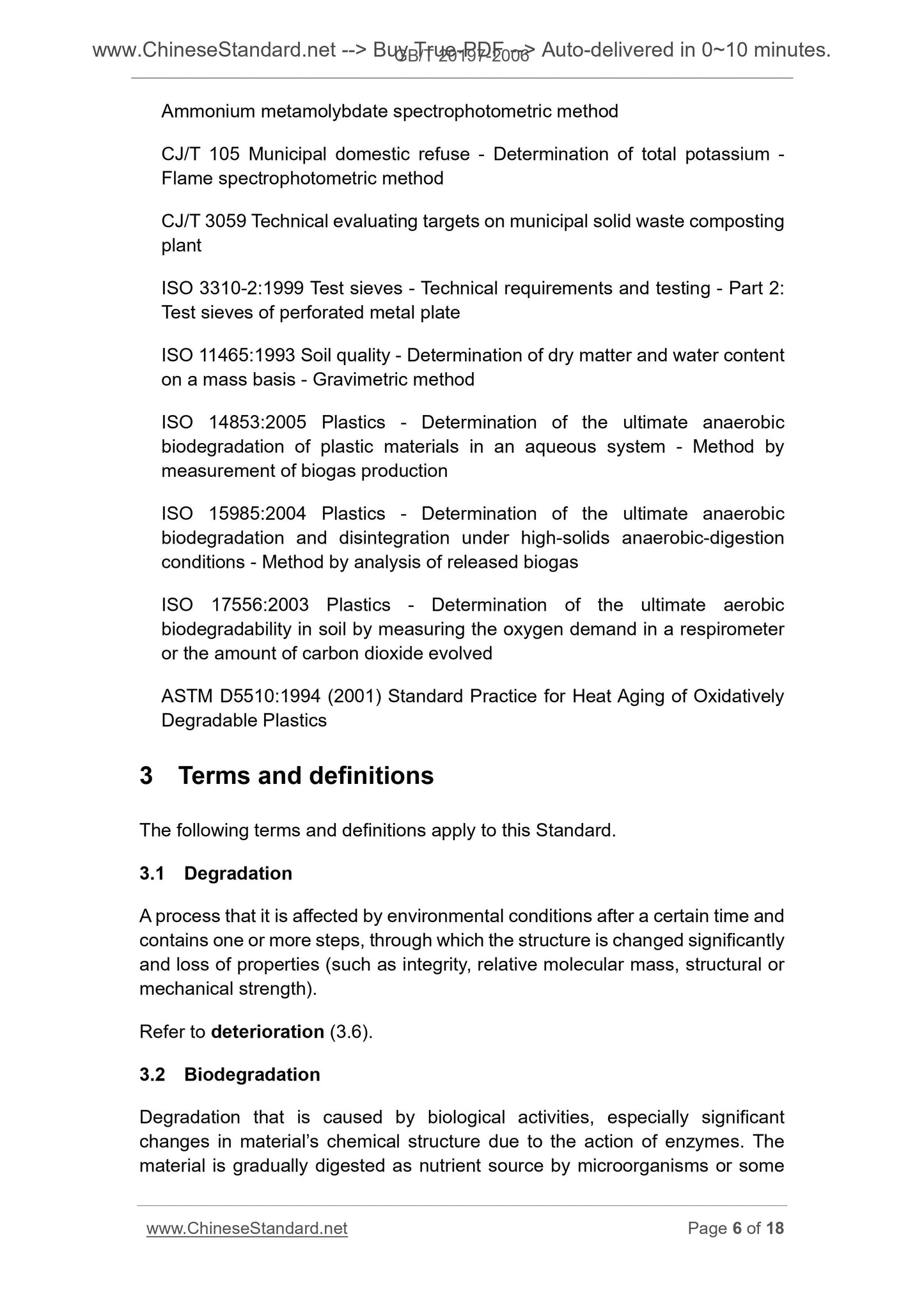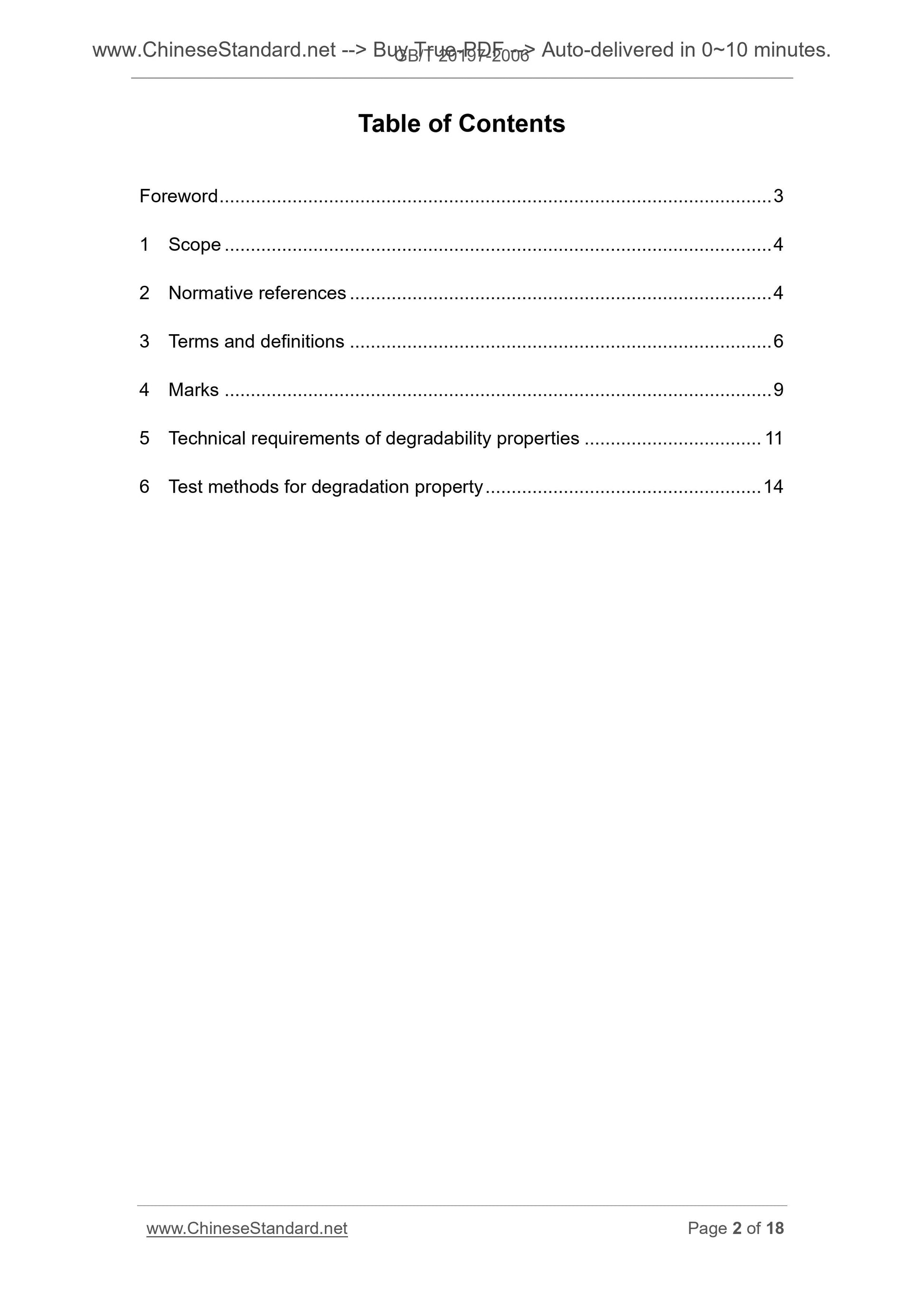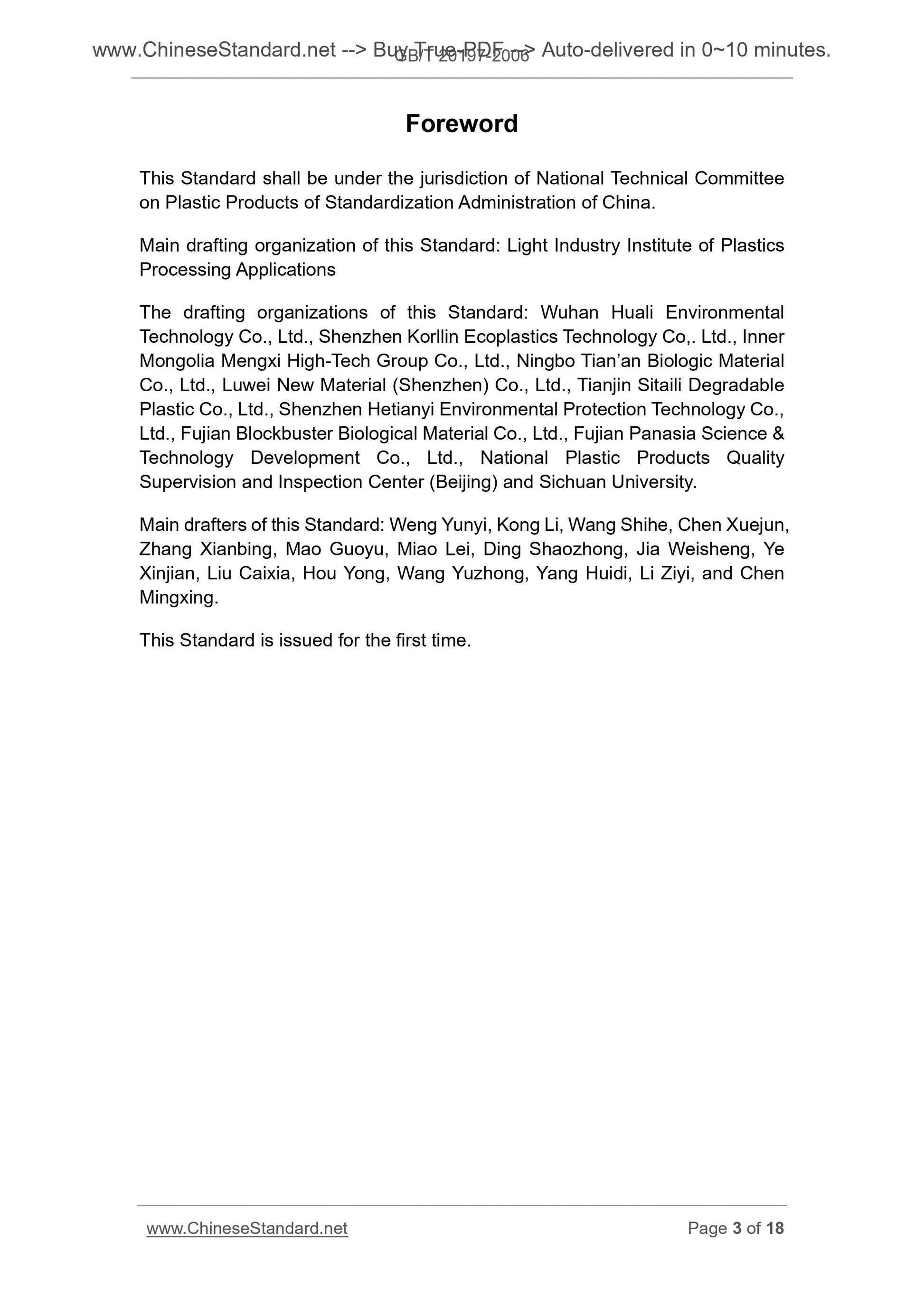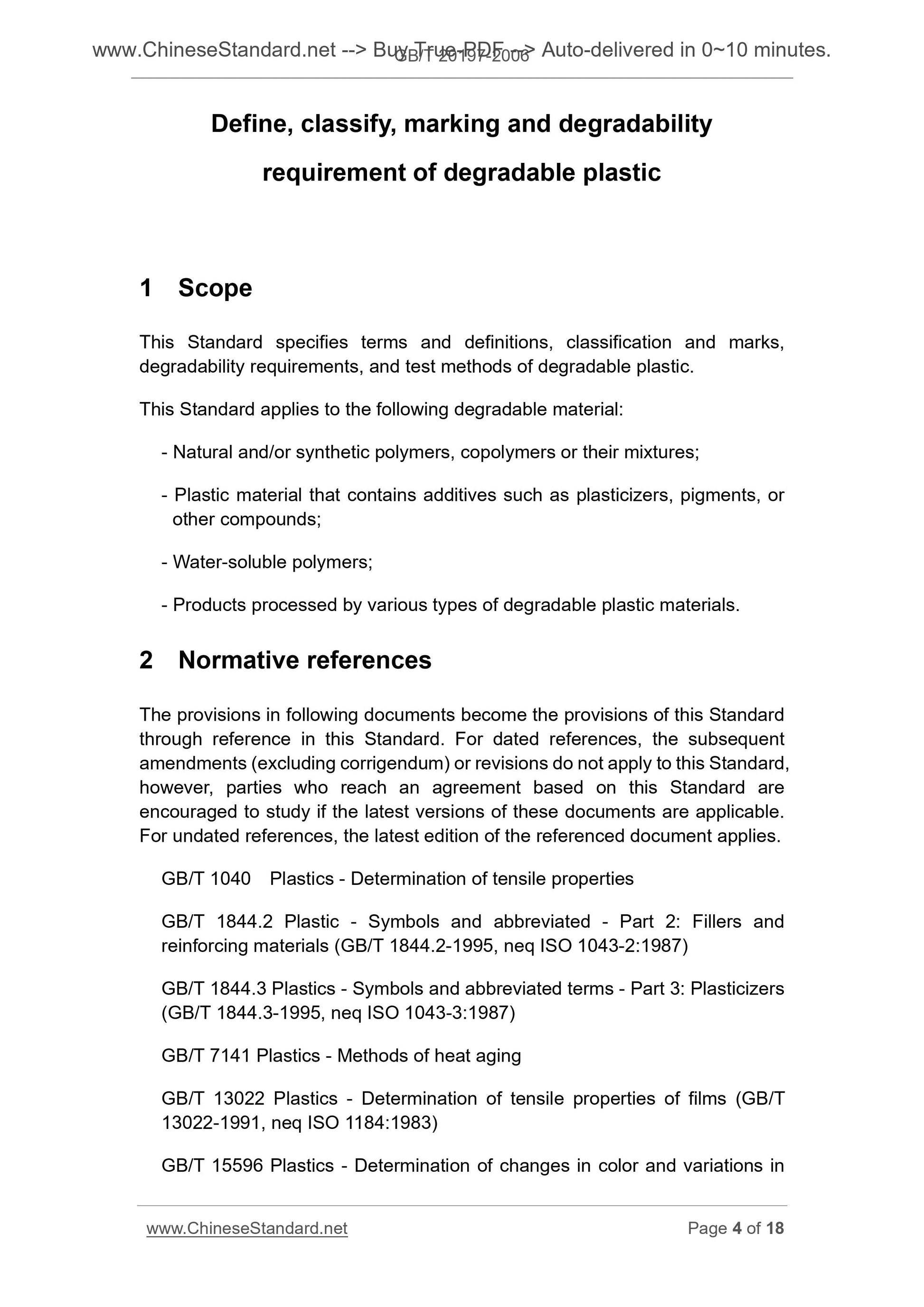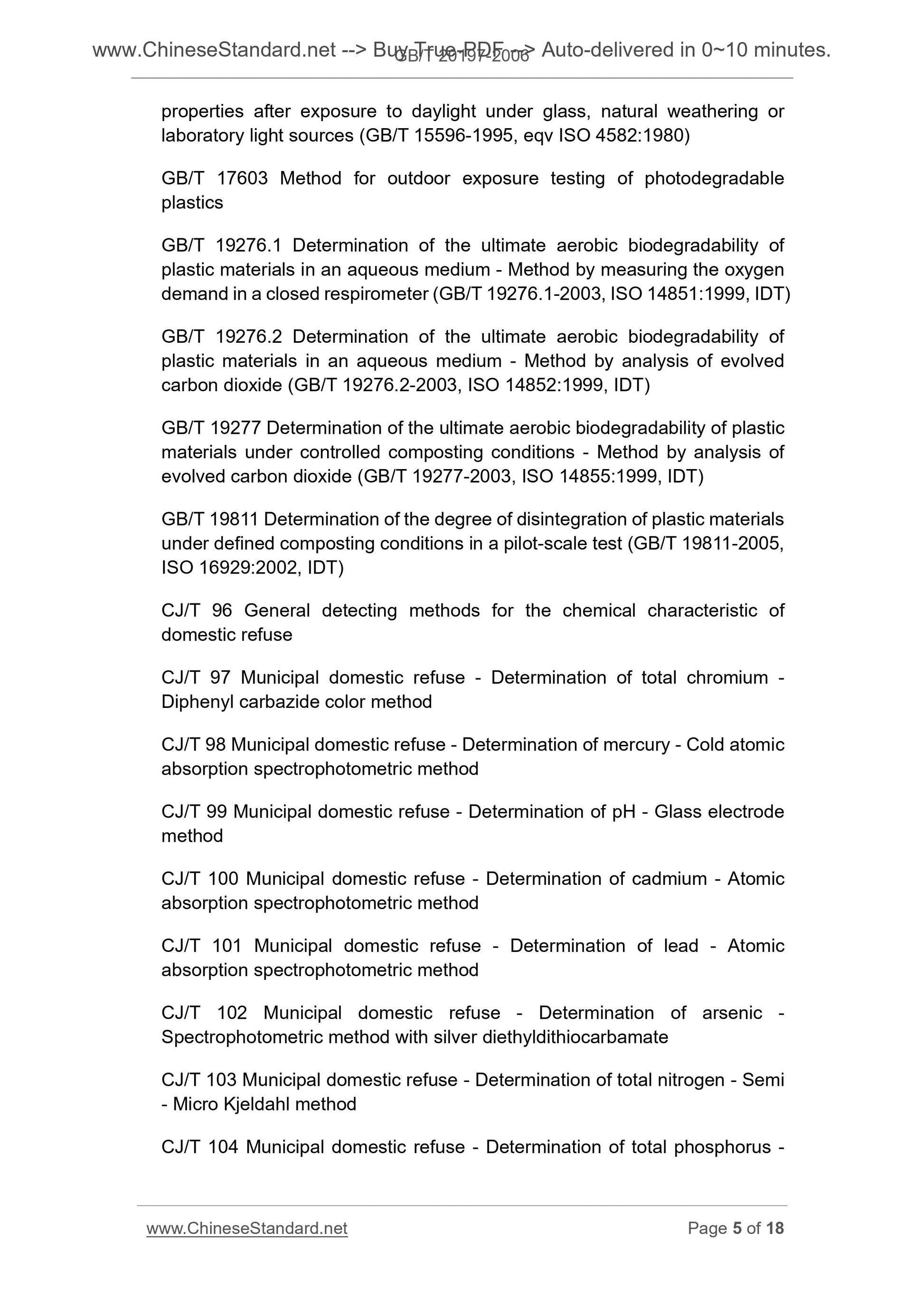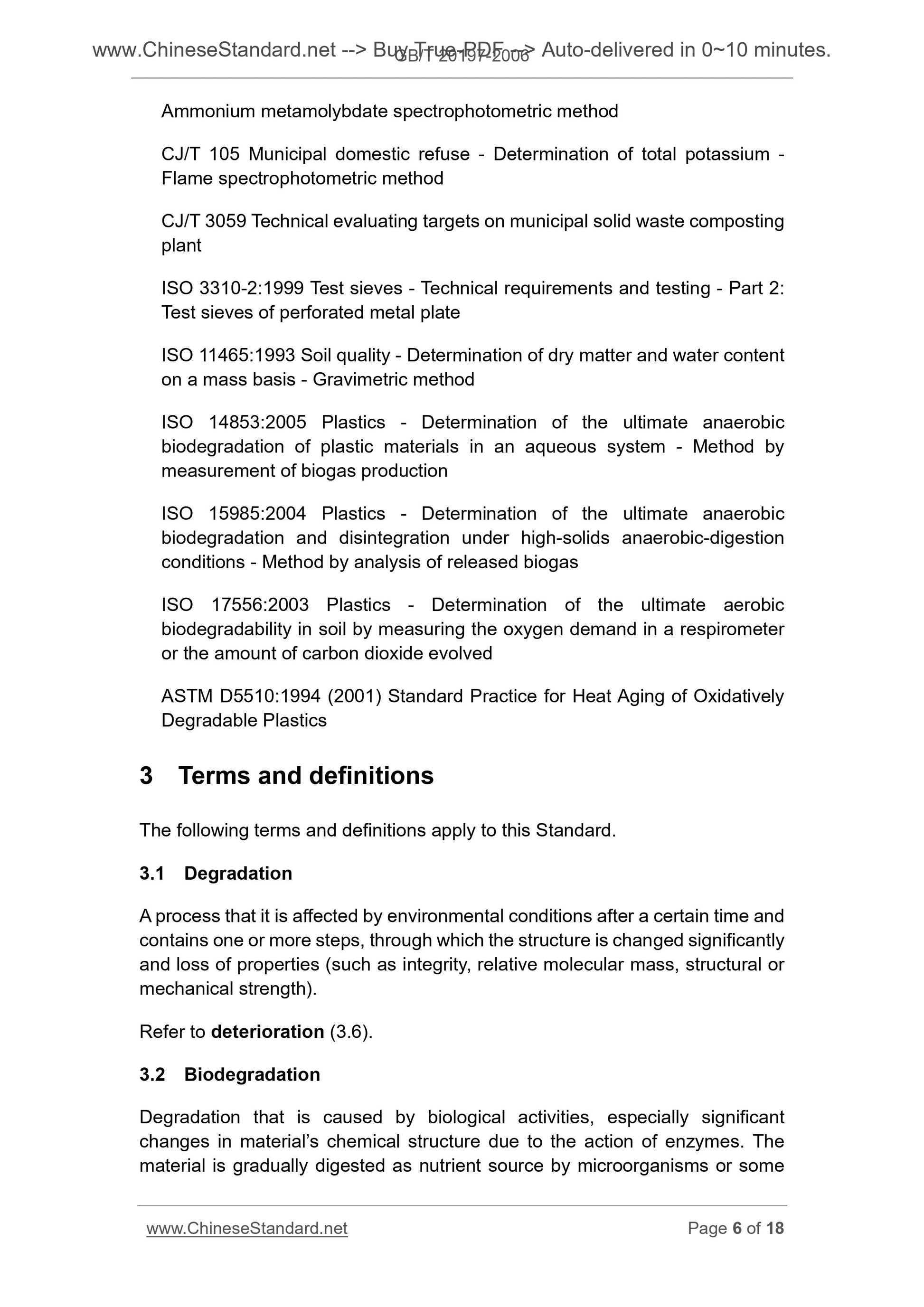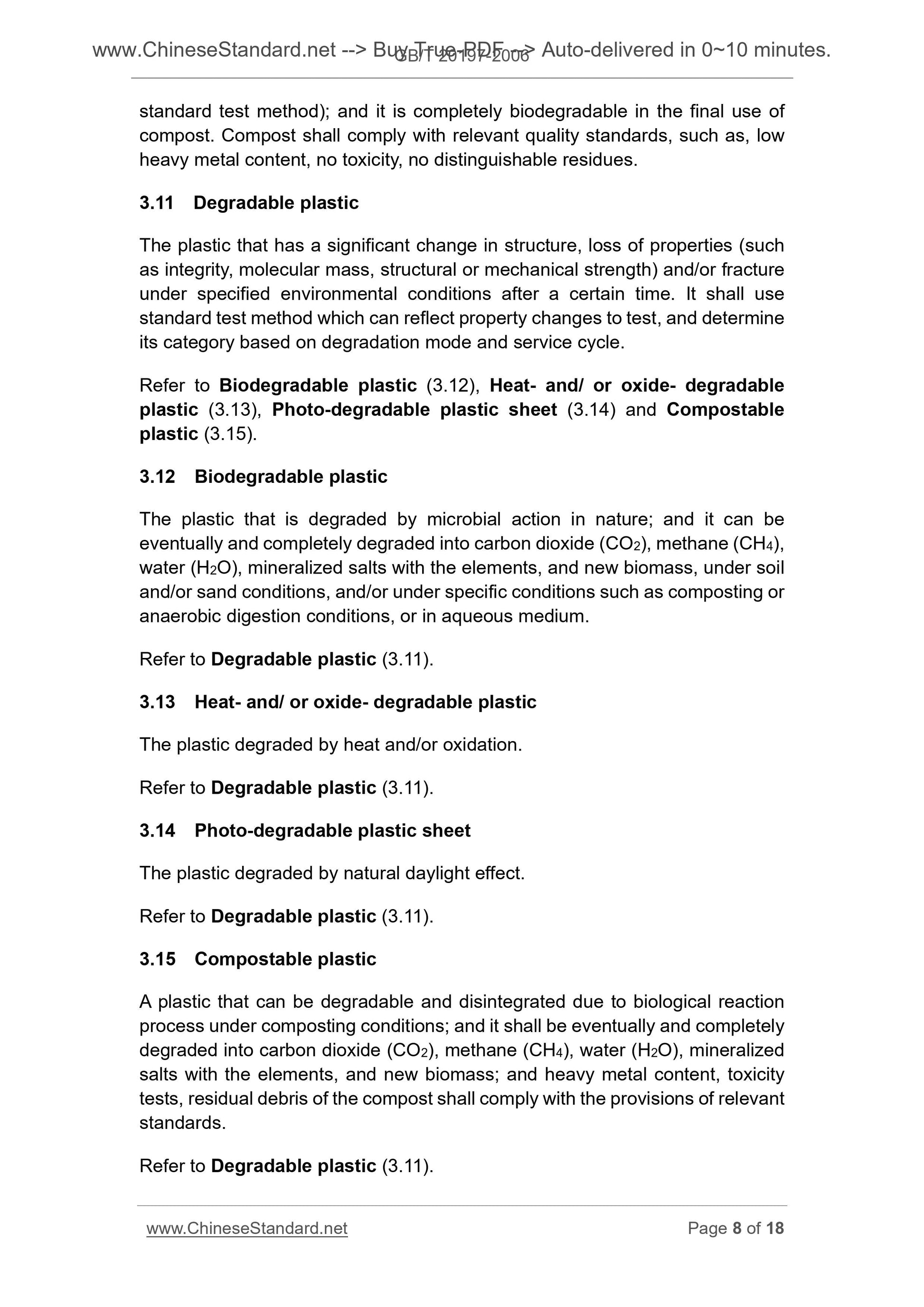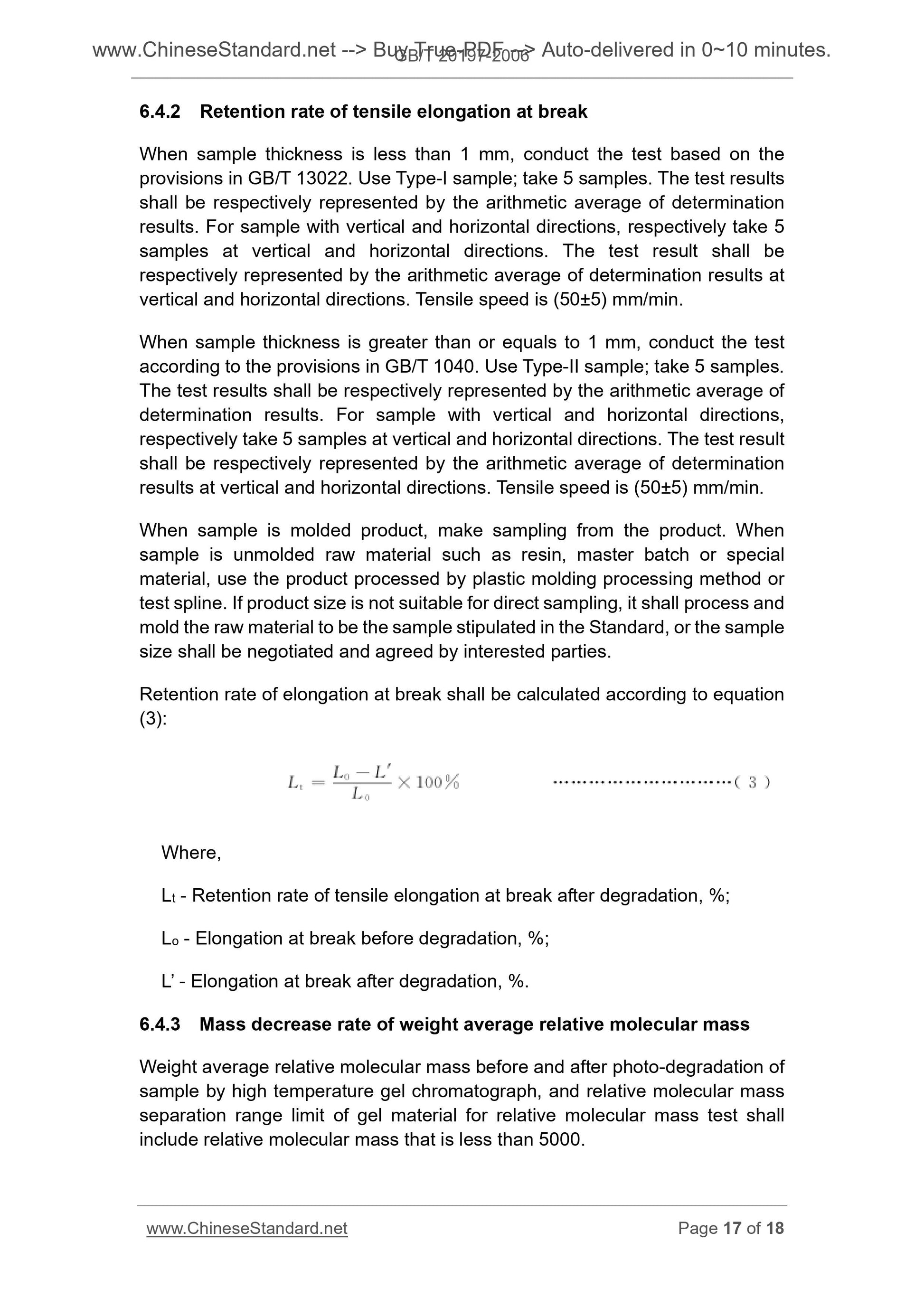1
/
of
10
www.ChineseStandard.us -- Field Test Asia Pte. Ltd.
GB/T 20197-2006 English PDF (GB/T20197-2006)
GB/T 20197-2006 English PDF (GB/T20197-2006)
Regular price
$85.00
Regular price
Sale price
$85.00
Unit price
/
per
Shipping calculated at checkout.
Couldn't load pickup availability
GB/T 20197-2006: Define, classify, marking and degradability requirement of degradable plastic
Delivery: 9 seconds. Download (and Email) true-PDF + Invoice.Get Quotation: Click GB/T 20197-2006 (Self-service in 1-minute)
Newer / historical versions: GB/T 20197-2006
Preview True-PDF
Scope
This Standard specifies terms and definitions, classification and marks,degradability requirements, and test methods of degradable plastic.
This Standard applies to the following degradable material.
- Natural and/or synthetic polymers, copolymers or their mixtures;
- Plastic material that contains additives such as plasticizers, pigments, or
other compounds;
- Water-soluble polymers;
- Products processed by various types of degradable plastic materials.
Basic Data
| Standard ID | GB/T 20197-2006 (GB/T20197-2006) |
| Description (Translated English) | Define, classify, marking and degradability requirement of degradable plastic |
| Sector / Industry | National Standard (Recommended) |
| Classification of Chinese Standard | G33 |
| Classification of International Standard | 83.140 |
| Word Count Estimation | 12,122 |
| Date of Issue | 2006-02-21 |
| Date of Implementation | 2007-01-01 |
| Regulation (derived from) | China National Standard Approval Announcement 2006 No.5 (Total No.92) |
| Issuing agency(ies) | General Administration of Quality Supervision, Inspection and Quarantine of the People's Republic of China, Standardization Administration of the People's Republic of China |
| Summary | This standard specifies the terms and definitions of degradable plastics, classification and marking, degradation of performance requirements, test methods. This standard applies to the following types of biodegradable materials: natural and/or synthetic polymers, copolymers or mixtures thereof, plastic materials such as pigments or additives other compounds, , contains a water-soluble polymer such as plasticizers, various types of degradable plastics material from the processing of products. |
Share
